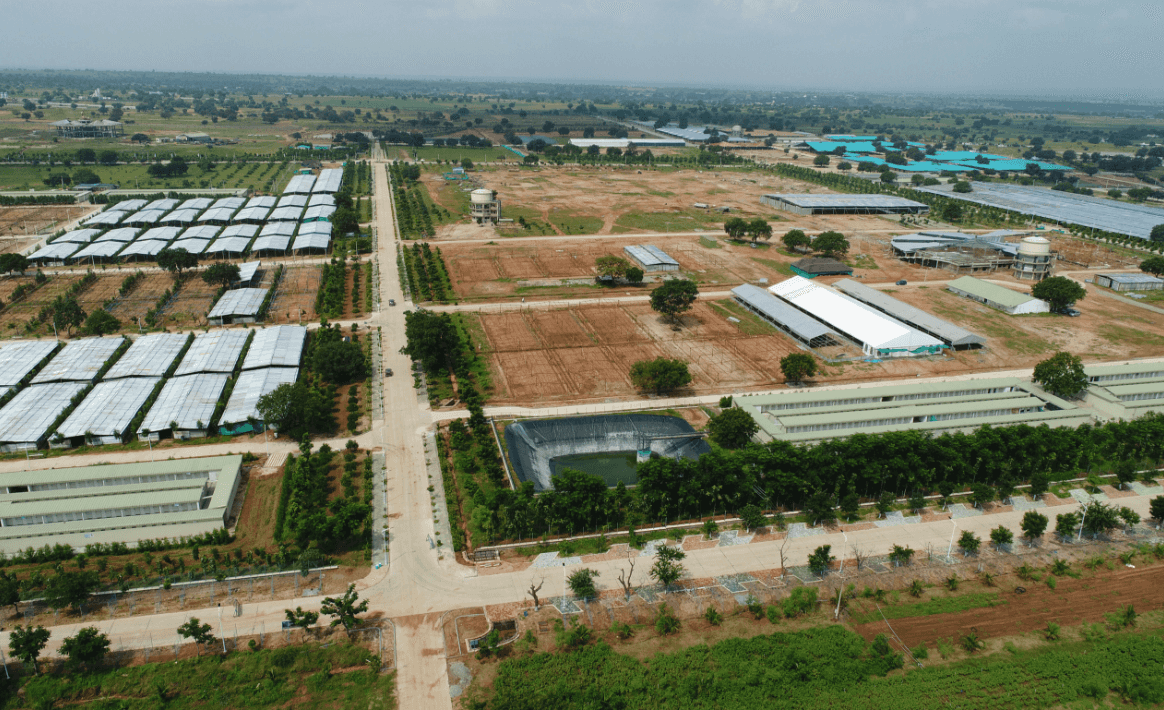Blue Kanha Initiative
दश कूप समा वापी, दशवापी समो हृदः।
दशहृद समः पुत्रों, दशपुत्रो समो द्रुम
daśa-kūpa-samā vāpī daśa-vāpī-samo hradaḥ
daśa hrada samaḥ putraḥ daśaputro samo drumaḥ ॥
A pond equals ten wells, a reservoir equals ten ponds. A progeny equals ten reservoirs, and a tree equals ten progeny. - Matsya Purana - 154:512
Kanha Sanctuary
A variety of species of birds and animals are found in the vicinity of Kanha Shanti Vanam. There are now 70 species of birds in Kanha. The tiny and the mighty all have a daily routine. It is a beautiful experience to follow and observe them, inspired by their total surrender to all other natural forces. You will find the Shikra Falcon, Black-Winged Kite, little Tailor Birds, Sunbirds, Bulbuls, and the weaver birds.
“A word of caution: It is not easy to leave Kanha. The songs of the birds will charm you to come back.” - Rajesh MenonRain Water Harvesting
The Kanha Shanti Vanam campus was designed in a way that the roads of the premises are mostly tilted to an angle. This technique helps in storing the rainwater in various reservoirs. The water bodies were widened and deepened to hold the full potential capacities of the stormwater.
The entire land was designed scientifically for the right sizes of stormwater drains to carry excess water from the rains to the water bodies.
Irrigation Systems
Drip Irrigation - In far-reaching sites, the plantation is equipped with water by the Drip Irrigation method, hence saving the water along with hydrated plantation. All shrubs and groundcovers have a drip irrigation system. The total Vegetated area is 100% under drip irrigation. The drip systems irrigate all the plantation which all goes on gravity.
Sprinkler Irrigation - 100% of turf area has a sprinkler irrigation system to reduce water loss.
Rain Guns - To improve water efficiency, reduce manual labor and water tankers, the large areas of forest landscapes have been deployed with Rain Guns, made from the latest Italian technology where appropriate. This technique helps to retain, and enhance the moisture content for some trees.
Extensive Mulching - Extensive mulching is used to prevent water evaporation around crops and farms.
Waste Water Treatments
We have deployed Advanced Aerated Wetlands technology to treat the majority of the wastewater.
The entire treated water is brought back into use for irrigating the plantation, lawns, and gardens.
A natural, environmentally friendly, and zero power consumption system known as Constructed Wetlands methodology has been adopted for treating both gray and black water.
Storage of charcoal in jute bags and placed in percolation pits to purify the water of residual matter and impurities (charcoal is a natural purifier). After one year, the charcoal is removed from jute bags and used in the soil as biochar.
The entire land was scientifically designed for the right amount of stormwater drains to carry excess water from the rains to the water bodies.


Results
- Kanha forest – Plantations of various kinds have taken place within the premises. We were able to achieve a micro-climate with the amount of plantation being dependent on existing water bodies. This is something we are replicating across the country.
- The arena had many built-in waterways from the past that were reused or reconstructed. These ways were buried with silt and were revived in this project. One of the stepped wells was identified and was rebuilt which was buried with silt & waste over time.
- Natural wetlands are created for maintaining the purity of water bodies.
- Groundwater level improved to the tune of 200 to 300 feet difference from where it was to where we are now. Not discounting the heavy rainfall this year, we have seen the water table just about a few meters below the natural ground level.
- Water efficiency and consumption have led to ample water storage for community usage and landscape utilization, even in case of drought or uncontrolled natural calamities.
- Increase in community ownership to maintain and sustain water bodies.
Spreading Awareness
All these projects have been implemented by creating awareness about the importance of water resources among all the residents and encouraging involvement from everyone, especially children and youth who have participated in many of these projects
- All-natural percolation ponds and sarovars (lakes) are man-made and created by the community with active participation from residents, visitors as well as children, and youth.
- Many campaigns such as Recycle Campaigns and Bring Your Own Bottle Campaign, and Webinars on water-efficient solutions were conducted.
- Signage – for water conservation and switching off taps
- Internships and green education – for residents, international students and focus groups

Facility
Drinking water is easily accessible and free all across campus to promote clean, healthy drinking water for free and avoid usage of plastic water bottles.
Rooftop rainwater harvesting structures have been created with help from the community and APOSS, which has helped revive several water bodies.

